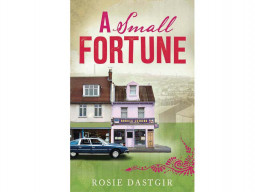
Twenty minutes into Kamila Shamsie’s session at the Lahore Literary Festival had me convinced of her eloquence and brilliance as a writer. And as a reader I expected nothing less in her latest offering, A God in Every Stone — an exceptional piece of literature which has underlying themes of family, love, war and colonialism. While Shamsie has tackled the themes of love and loss skilfully, it is her treatment of the historical aspect of the book that showcases her real expertise as a writer. The plot is based for the most part, in the city of Caspatyrus, now Peshawar, and is set against a backdrop of two episodes of violence — WWI and the Qissa Khawani massacre. To do justice to their importance, Shamsie has dedicated a segment to each of these events.
The story begins with the arrival of Vivian Rose Spencer, a British archaeologist to Peshawar in a quest to unearth the city’s past. She is helped by a young Peshawari boy, Najeeb Gul, who is also extremely interested in the history of the region. The plot revolves around Vivian, Najeeb and Qayyum Gul, Najeeb’s older brother who has just returned home after losing an eye fighting for the British Indian army. The equation between the English protagonist and the young local, is what takes the novel forward. Qayyum’s story, despite being significant to the book, pales in comparison. Another central theme in the plot is the ancient artefact Vivian is searching for. The treasured relics she ends uncovering in the process, do not carry million dollar price tags like they do in a Dan Brown novel, but have a deep personal and familial connection.

This novel is a juxtaposition of the Eastern and Western sensibilities which can be viewed as intense or comical. The god in this book, besides being in every stone, lies in the details. Furthermore, the characters are refreshingly relatable as they struggle with their inner demons to move ahead. The occasional jibes add spontaneous humour to a plot that relies more on the serious side as its strong suit. There is a dramatic shift in the latter half, however, where the plot is propelled through the exchange of letters and telegrams, as transitions from one period to another, which is the best part of the book.
Even though Shamsie shines for the most part, the book is not without its fair share of flaws. The prospects of Pathan women are exceedingly bleak throughout and the aftermath of Qissa Khawani tragedy seems a little dragged and becomes a tad predictable. The conclusion is also not as comprehensive and concrete as the readers would have hoped it to be. But overall, these drawbacks are so petty that they can be overlooked in the bigger picture. So if you are a history buff, an archaeology lover or just a fan of great writing, this book will be a delight. It might even convince you to visit Peshawar and see the city through Shamsie’s eyes.
Muhammad Asif is a medical student from Abbottabad. He is a freelance writer for various publications. He tweets @asifnz
Published in The Express Tribune, Sunday Magazine, April 20th, 2014.
COMMENTS (3)
Comments are moderated and generally will be posted if they are on-topic and not abusive.
For more information, please see our Comments FAQ






















































@Islooboy: Haven't read the novel but " god in every stone" or in every thing, for that matter, is the foundation of mysticism.
A god in every stone? Isn't it a case of idolatory?
" A God in Every Stone " ?... Music to the ears of a Hindu ..